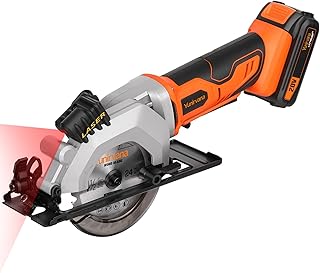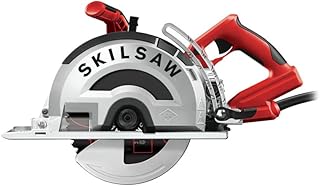Cutting metal requires precision, power, and the right tool for the job. If you’re looking for the best saws for cutting metal, you’ve come to the right place. Whether you’re tackling sheet metal, pipes, or thick steel beams, using an inappropriate saw can make your task frustrating and inefficient. But don’t worry—there are saws designed specifically for metal that make your work smoother. Along the way, we’ll also touch on choosing the best sawzall blade for cutting aluminum, and even explore tools that handle woodworking, like the best saw to cut trim, showing the versatility of modern saws. For those comparing options, understanding the range of best saws in terms of power, blade type, and cutting efficiency is essential. Keep reading to uncover the top tools, expert insights, and practical guidance that will elevate your metal cutting projects.
Top Picks
Best Metal Cutter: Evolution S355CPSL – Heavy Duty 14 Inch Metal Cutting Chop Saw
The EVOLUTION S355CPSL is engineered for precise metal cutting, featuring a 355 mm stainless steel blade with Dry-Cut technology that minimizes sparks and ensures smooth, burr-free results. Its quick release vice simplifies material setup and adjustments, while the blade guard and chip deflector enhance safety during operation. The corded electric design provides consistent 1,800-watt power at 1450 RPM, making it suitable for both light and moderately heavy-duty metalwork.
From a customer and professional perspective, the S355CPSL stands out for its efficiency, safety features, and ability to deliver clean cuts with minimal heat or debris. Users often appreciate the combination of performance and stability, particularly for repetitive cutting tasks. Overall, this tool offers solid value for those seeking reliable metal-cutting performance, with thoughtful engineering that prioritizes precision and ease of use.
Best 20V Metal Saw: DEWALT 20V MAX XR 7-1/4 in. Metal Cutting Circular Saw
The DEWALT DCS383B 20V MAX XR 7-1/4 in. Metal Cutting Circular Saw delivers professional-grade performance for demanding metal cutting jobs. Its 20V MAX brushless motor generates up to 1,400 watts of power, enabling it to cut through 214 20-gauge steel studs or 105 feet of corrugated decking on a single charge. The saw features a 2-5/8 inch depth of cut, an integrated chip collector to keep work areas clean, and an electronic brake that stops the blade almost instantly for safety and control.
From a professional and user perspective, the DCS383B stands out for its combination of portability, power, and precision. Tradespeople appreciate its efficient cutting, low maintenance brushless motor, and smart Tool Connect+ connectivity for managing assets and tracking usage. Overall, it offers excellent productivity and reliability for serious metalworking tasks, justifying its higher price point with robust performance and advanced features.
Best Cordless Metal Saw: M18 Fuel Metal Cutting Circular Saw (Bare Tool)
The Milwaukee 2782-20 is a compact, cordless metal cutting saw built for versatility and mobility on the job site. Equipped with an 8-inch high-carbon steel blade and a brushless motor, it delivers efficient, clean cuts through various metals. The saw operates at 900 RPM and offers a fixed 90-degree cutting angle, making it suitable for precise straight cuts. Its lightweight 4.8-pound design, along with portable table saw compatibility, enhances ease of transport and setup.
From a professional perspective, users appreciate the balance of portability, power, and reliability. The brushless motor reduces maintenance and extends runtime, while the 5-year warranty provides added confidence in long-term durability. Overall, the Milwaukee 2782-20 offers solid performance for on-the-go metal cutting, combining convenience and dependable cutting capability in a cordless format.
FAQs
Can a regular saw cut metal?
A regular saw, such as a standard wood saw, is generally not suitable for cutting metal. Metal is much harder and denser than wood, and using a wood blade can lead to damage, dulling, or even accidents. To cut metal safely and effectively, you need a saw with:
-
High-speed steel (HSS) blades or carbide-tipped teeth
-
Appropriate tooth design, such as fine-tooth blades for thin metals and coarse-tooth blades for thick metals
-
Sufficient power, whether corded, cordless, or pneumatic, depending on the metal thickness
For thin metals, some multipurpose saws may manage the cut, but for thicker sheets, pipes, or steel bars, using a specialized metal-cutting saw is strongly recommended.
What is the easiest way to cut through metal?
The easiest way to cut metal depends on the type of metal and thickness. Common methods include:
-
Power saws: A circular saw or band saw with a metal-cutting blade is fast and precise.
-
Reciprocating saws (Sawzall): Ideal for demolition or cutting irregular shapes; choose a fine-tooth metal blade.
-
Angle grinders: Quick for thin metal sheets or bars, but requires caution due to sparks.
-
Nibblers or shears: Effective for sheet metal with minimal deformation.
Tip: Lubricating the blade with cutting oil can reduce friction, prolong blade life, and improve smoothness when cutting thick metals.
How to cut through very thick metal?
Cutting very thick metal requires careful planning and the right tools:
-
Use a high-power metal-cutting saw such as a chop saw with carbide-tipped teeth.
-
Multiple passes: For extremely thick stock, make shallow cuts first, then deepen gradually.
-
Secure the material: Clamps or a vice prevent movement, ensuring a safer cut.
-
Cool the blade: Applying cutting oil or coolant prevents overheating and preserves blade integrity.
-
Consider alternative tools: For industrial or extremely thick metal, plasma cutters or oxy-acetylene torches may be faster and more efficient than mechanical saws.
How many tooth blade for cutting metal?
The number of teeth on a blade significantly affects cutting performance:
-
Thin metal sheets: Use blades with 24–40 teeth per inch (TPI) for smooth cuts.
-
Medium-thickness metal (pipes, small beams): Blades with 14–24 TPI balance speed and control.
-
Thick metal bars or structural steel: Coarser blades with 6–14 TPI allow faster cutting while preventing overheating.
Remember, a higher TPI gives cleaner cuts but slower progress, while a lower TPI cuts faster but produces rougher edges. Matching TPI to metal thickness ensures efficiency and precision.
Conclusion
Choosing the best saws for cutting metal is essential for safety, efficiency, and clean results. From high-speed circular saws to reciprocating saws and specialized blades, understanding the right tool for your metal type and thickness makes all the difference. By considering blade design, tooth count, power, and cutting technique, you can tackle thin sheets or thick beams with confidence. Whether you’re a DIY enthusiast or a professional, investing in the right saw and following proper methods ensures your metal cutting projects are precise, safe, and efficient.






















